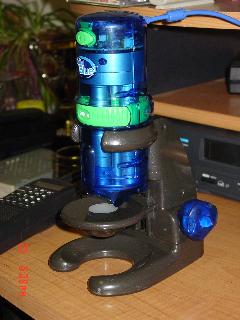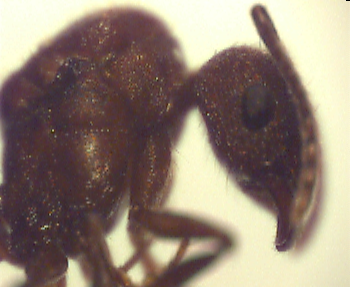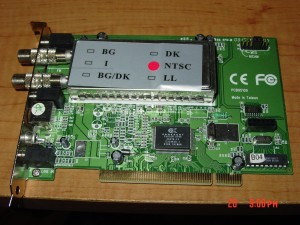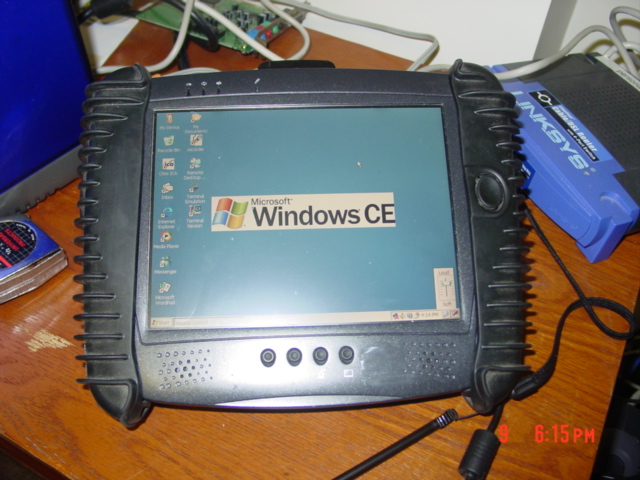Well, the bad news is the ant colony I was rearing has died off. I’m unsure what the problem was, but the ant queen was found dead, followed by the only two offspring dying a couple of days later.
I don’t have a decent digital camera that can take decent pictures of something as small as an ant, and I came across an old article detailing an interesting childrens toy: The Intel QX3 microscope.

It was released about 10 years ago, so I’m obviously behind the times. The resolution isn’t the greatest (the QX3 is a first-gen, but the QX5 has some improvements including better resolution).
The device runs well on linux, you need the following configuration options (in addition to normal USB drivers):
CONFIG_VIDEO_CPIA=m
CONFIG_VIDEO_CPIA_USB=m
The camera (the microscope is basically a webcam) has a number of interesting settings, all touchable via the /proc filesystem:
| ——– | current | min | max | default | comment |
| brightness: | 50 | 0 | 100 | 50 | |
| contrast: | 48 | 0 | 96 | 48 | steps of 8 |
| saturation: | 50 | 0 | 100 | 50 | |
| sensor_fps: | 3.750 | 3 | 30 | 15 | |
| stream_start_line: | 240 | 0 | 288 | 240 | |
| sub_sample: | 422 | 420 | 422 | 422 | |
| yuv_order: | YUYV | YUYV | UYVY | YUYV | |
| ecp_timing: | normal | slow | normal | normal | |
| color_balance_mode: | auto | manual | auto | auto | |
| red_gain: | 15 | 0 | 212 | 32 | |
| green_gain: | 31 | 0 | 212 | 6 | |
| blue_gain: | 39 | 0 | 212 | 92 | |
| max_gain: | 8 | 1 | 8 | 2 | 1,2,4 or 8 |
| exposure_mode: | auto | manual | auto | auto | |
| centre_weight: | on | off | on | on | |
| gain: | 4 | 1 | max_gain | 1 | 1,2,4,8 possible |
| fine_exp: | 2 | 0 | 510 | 0 | |
| coarse_exp: | 302 | 0 | 302 | 185 | |
| red_comp: | 220 | 220 | 255 | 220 | |
| green1_comp: | 214 | 214 | 255 | 214 | |
| green2_comp: | 214 | 214 | 255 | 214 | |
| blue_comp: | 230 | 230 | 255 | 230 | |
| apcor_gain1: | 0×18 | 0×0 | 0xff | 0×1c | |
| apcor_gain2: | 0×16 | 0×0 | 0xff | 0×1a | |
| apcor_gain4: | 0×24 | 0×0 | 0xff | 0×2d | |
| apcor_gain8: | 0×34 | 0×0 | 0xff | 0×2a | |
| vl_offset_gain1: | 20 | 0 | 255 | 24 | |
| vl_offset_gain2: | 24 | 0 | 255 | 28 | |
| vl_offset_gain4: | 26 | 0 | 255 | 30 | |
| vl_offset_gain8: | 26 | 0 | 255 | 30 | |
| flicker_control: | off | off | on | off | |
| mains_frequency: | 50 | 50 | 60 | 50 | only 50/60 |
| allowable_overexposure: | 141auto | auto | 255 | auto | |
| compression_mode: | auto | none,auto,manual | auto | ||
| decimation_enable: | off | off | on | off | |
| compression_target: | quality | framerate | quality | quality | |
| target_framerate: | 15 | 1 | 30 | 15 | |
| target_quality: | 5 | 1 | 64 | 5 | |
| y_threshold: | 12 | 0 | 31 | 6 | |
| uv_threshold: | 11 | 0 | 31 | 6 | |
| hysteresis: | 3 | 0 | 255 | 3 | |
| threshold_max: | 11 | 0 | 255 | 11 | |
| small_step: | 1 | 0 | 255 | 1 | |
| large_step: | 3 | 0 | 255 | 3 | |
| decimation_hysteresis: | 2 | 0 | 255 | 2 | |
| fr_diff_step_thresh: | 5 | 0 | 255 | 5 | |
| q_diff_step_thresh: | 3 | 0 | 255 | 3 | |
| decimation_thresh_mod: | 2 | 0 | 255 | 2 | |
| toplight: | off | off | on | off | |
| bottomlight: | off | off | on |
You can alter any of these settings by doing something like:
echo “bottomlight: on” > /proc/cpia/videoX
(I’ve found that you need to have the camera actively in use for these settings changes to actually work).
Two programs work well with the camera – xawtv and tvtime. TvTime has a few minor issues that I’ve yet to work out, but I’ll figure that out eventually (namely the buffer isn’t filling up properly). XawTV has an issue with screencaptures – again an issue I’ll work out shortly.
For better images, I’ve found that setting sensor_fps to 10 works well. One I have a specimen on the slide and in proper position, I drop that to 3 to actually take the image.
As I mentioned earlier, the resolution isn’t that great. I’ve been told lighting is the key, and I’m still experimenting. Here’s the head of the queen ant, I’m sure of species:



